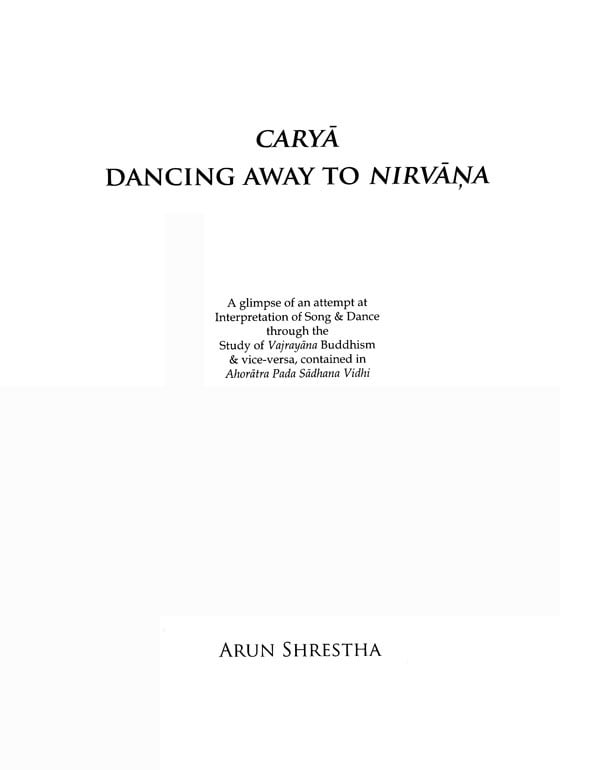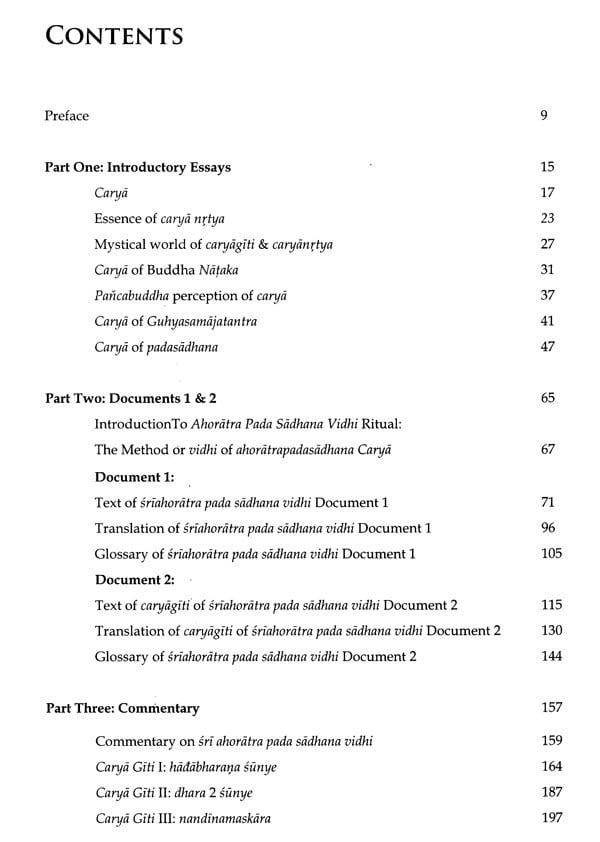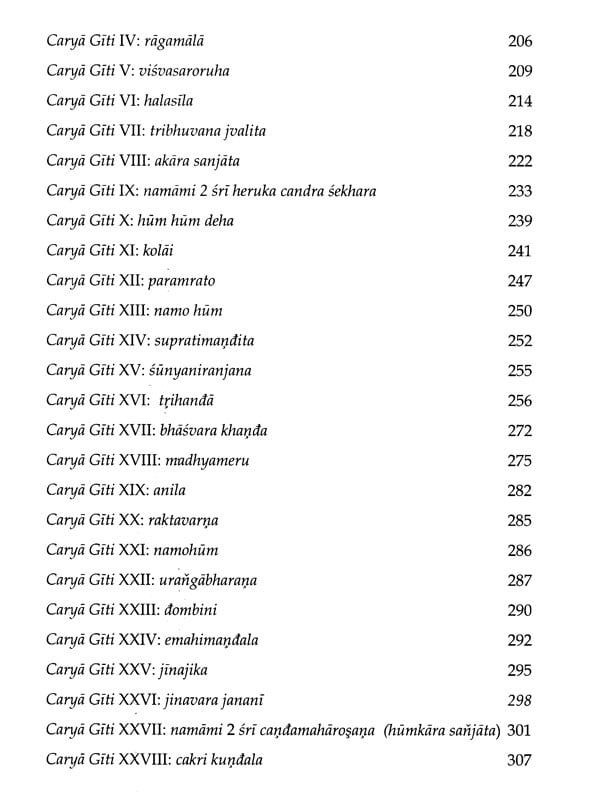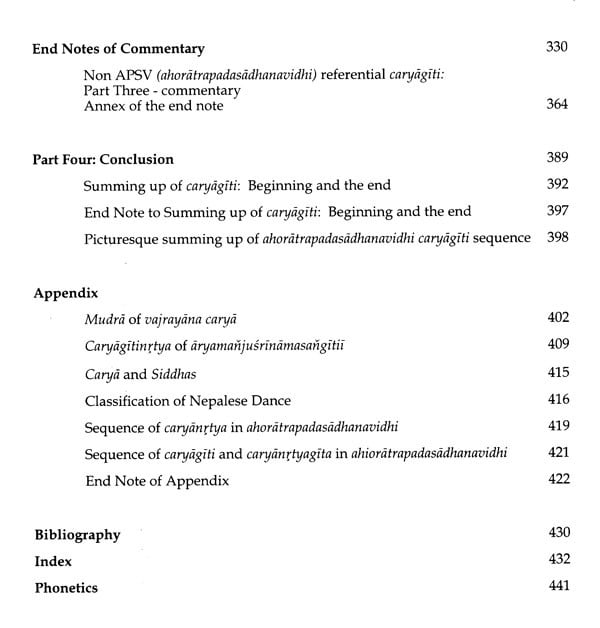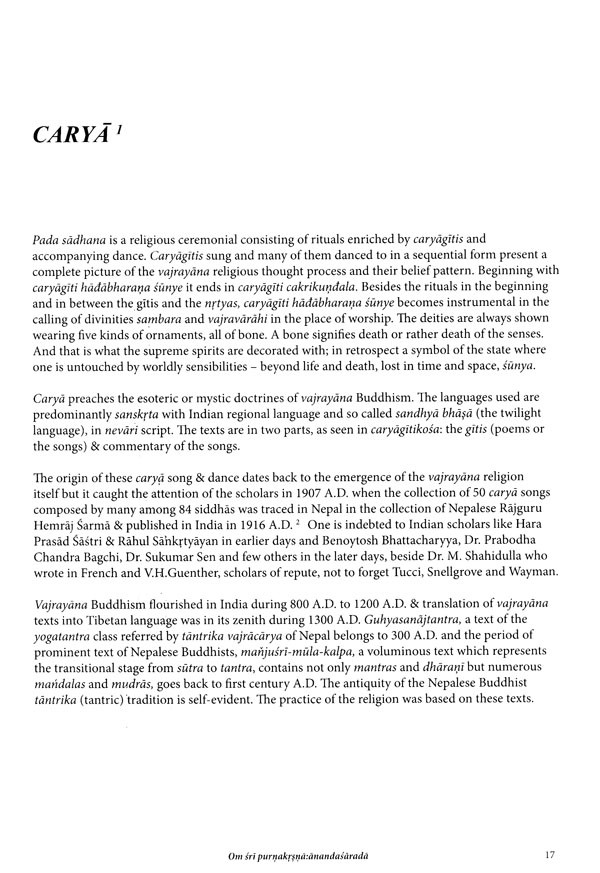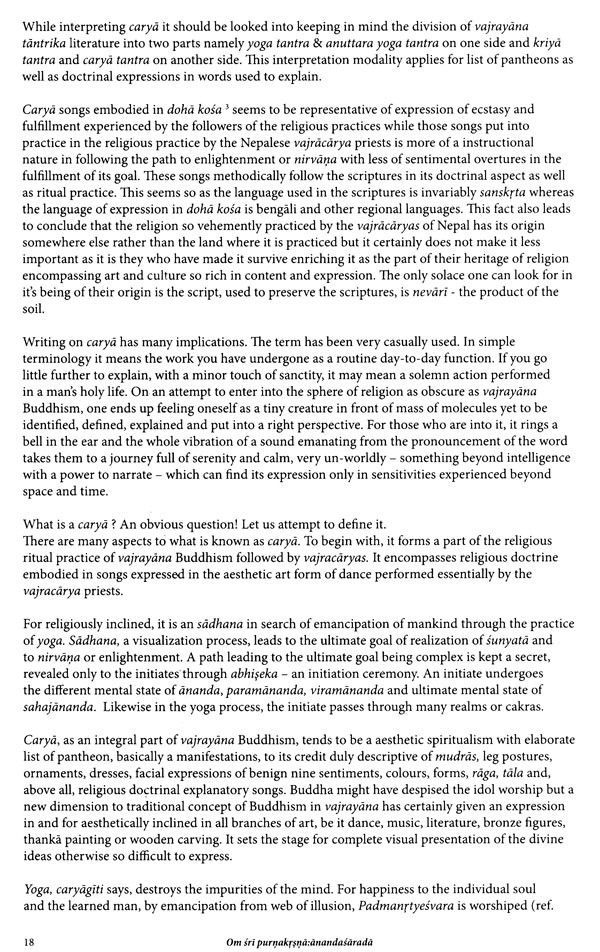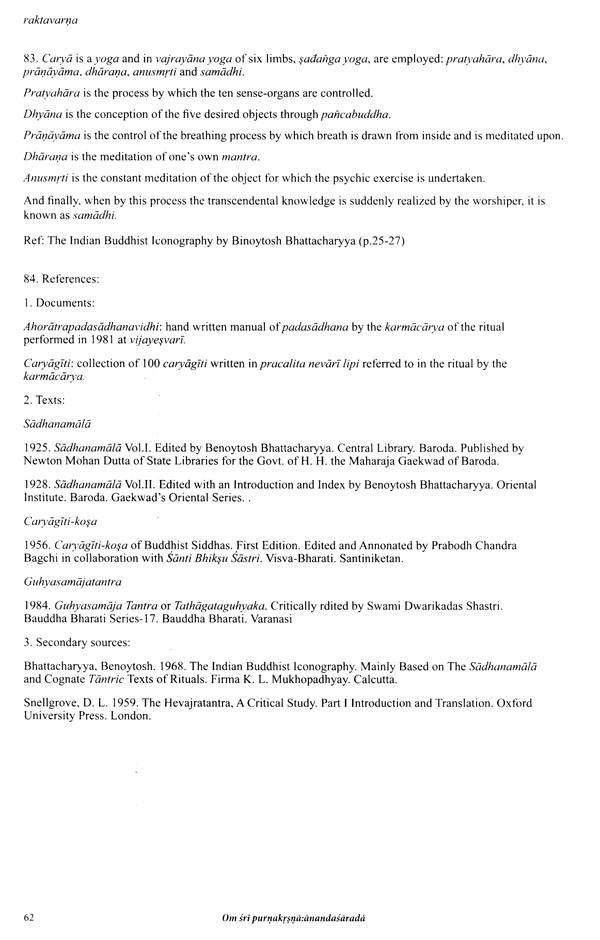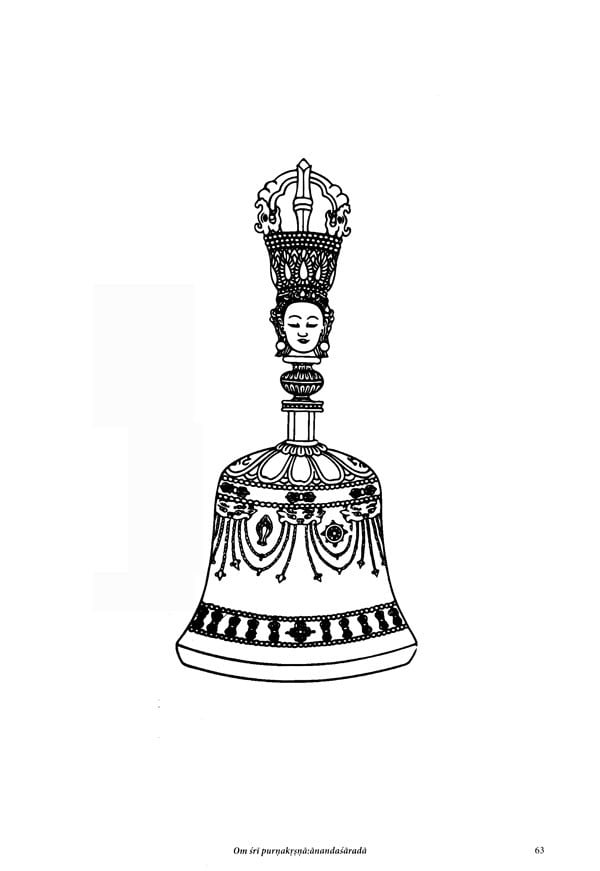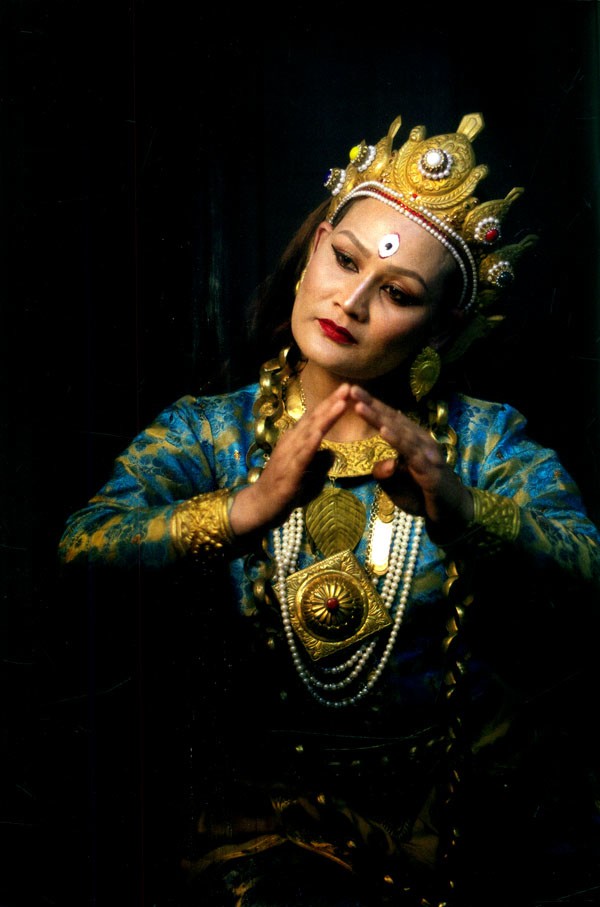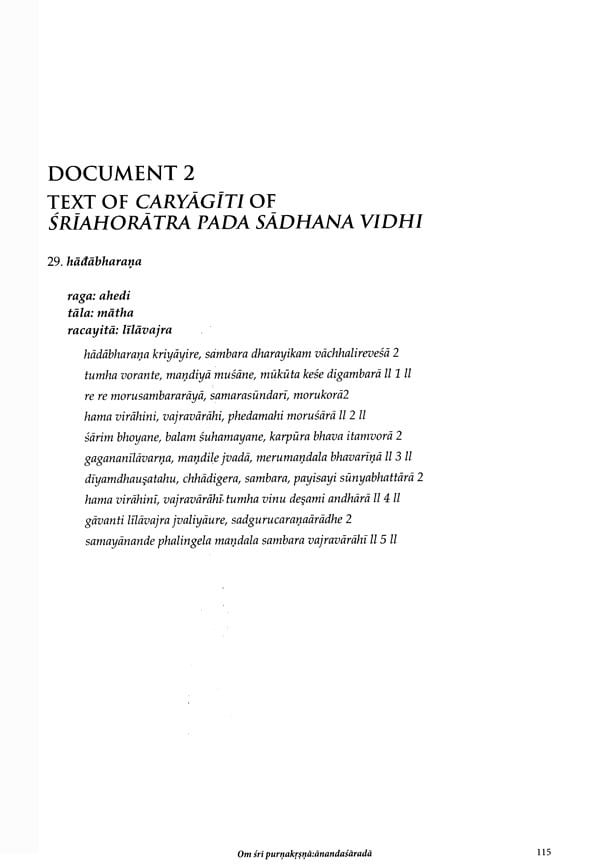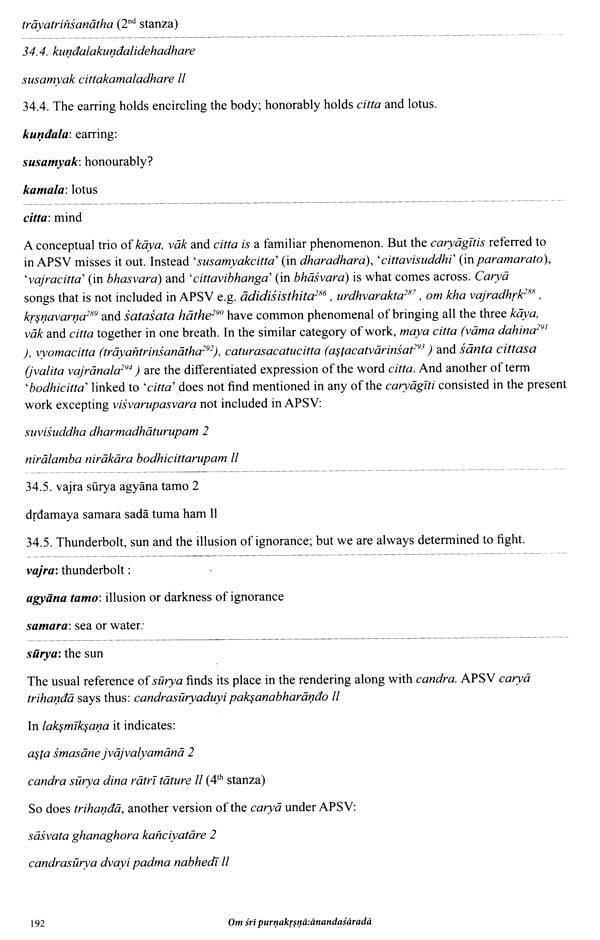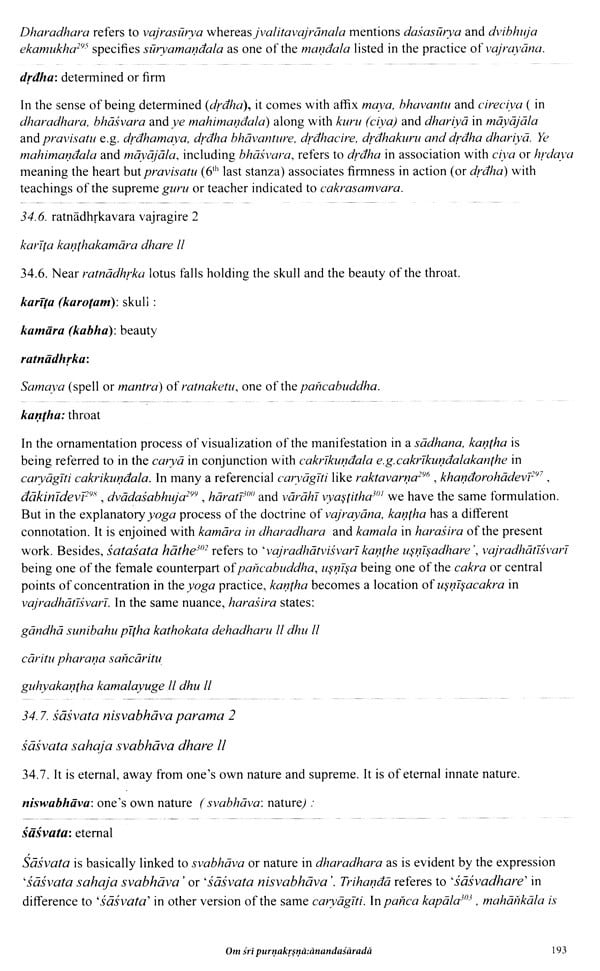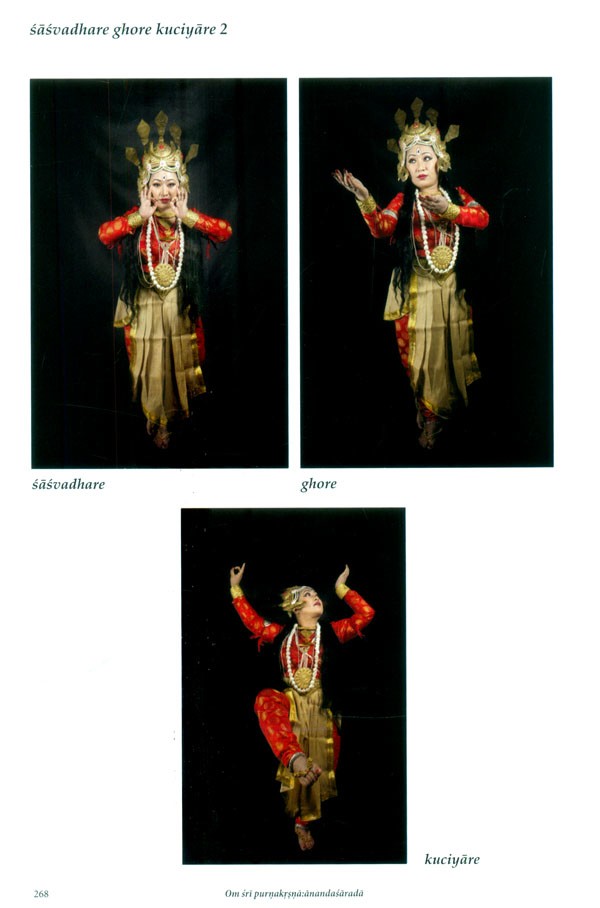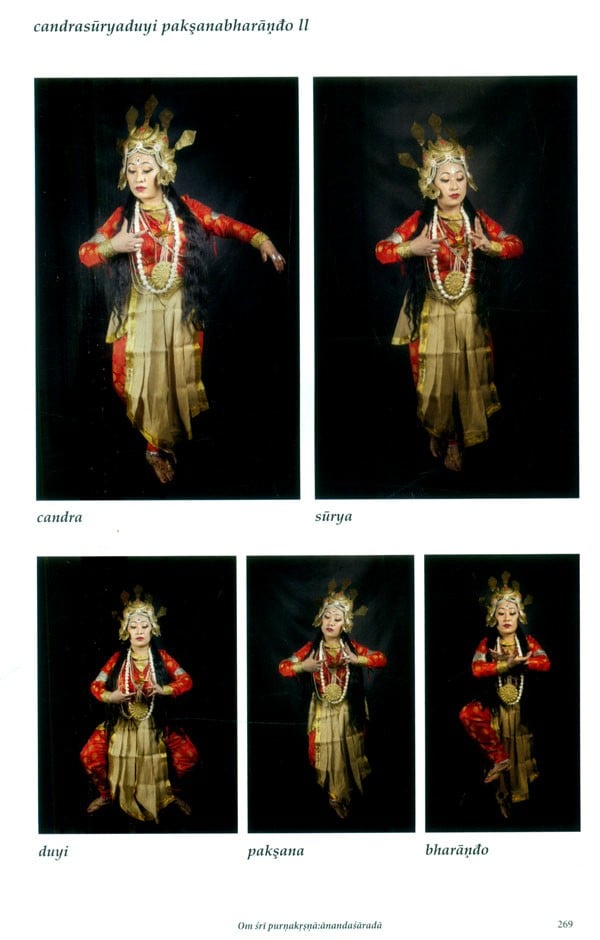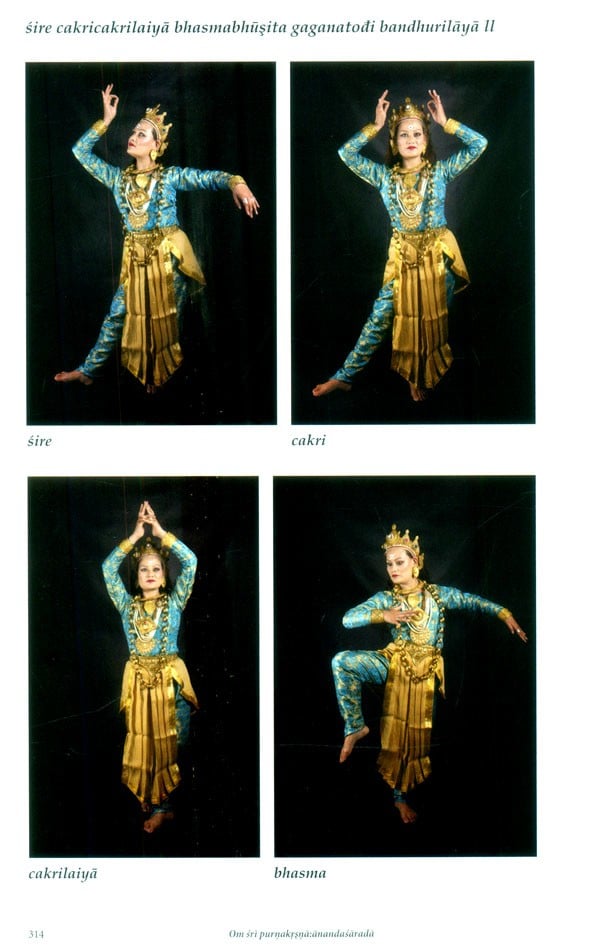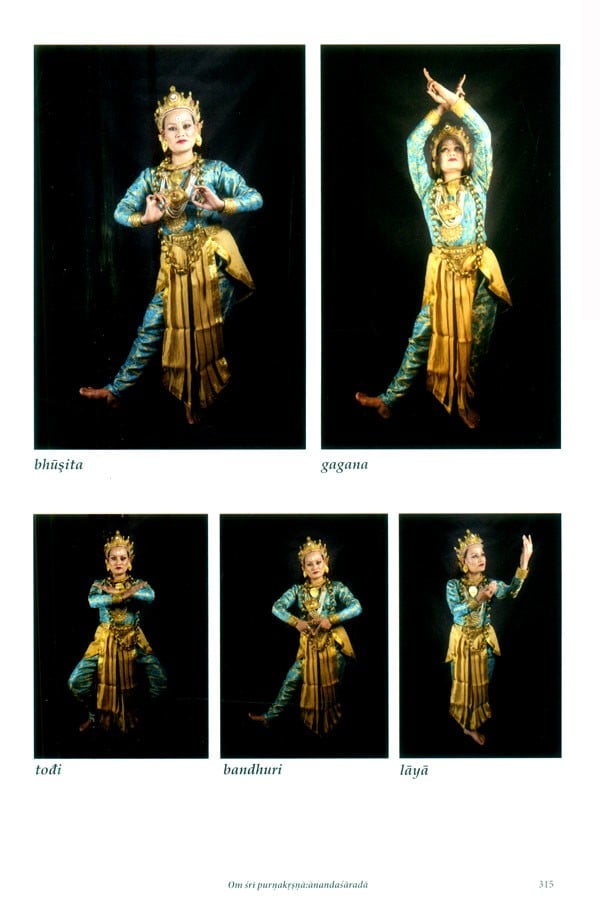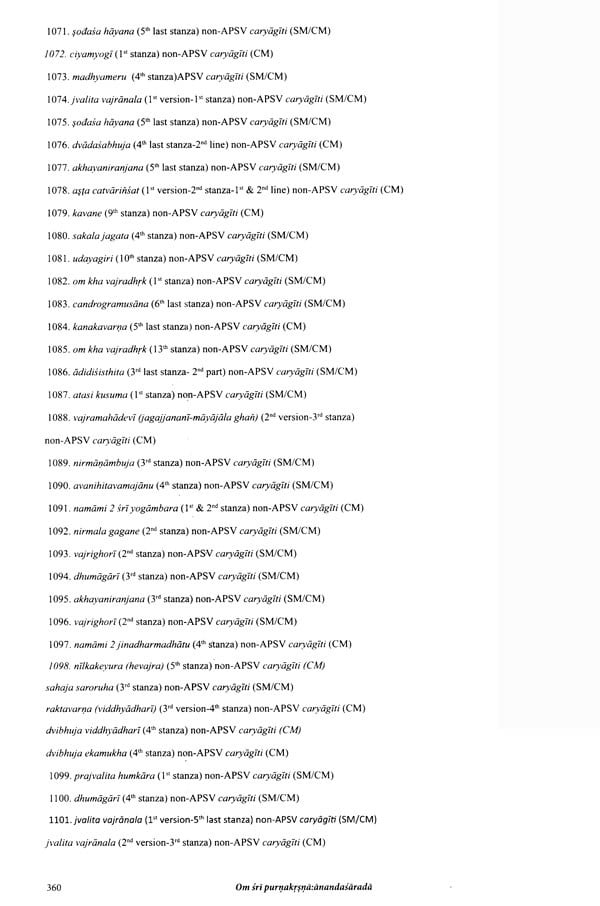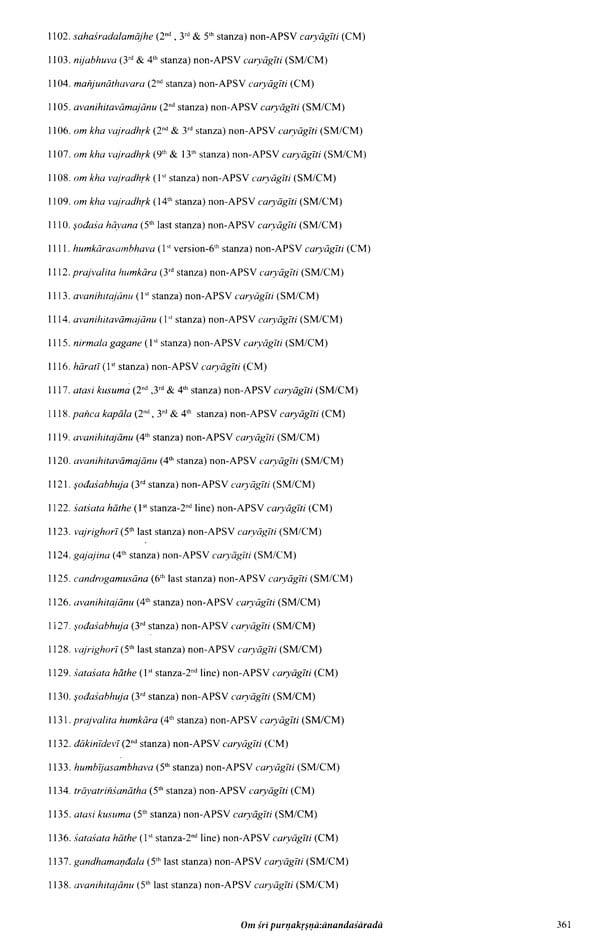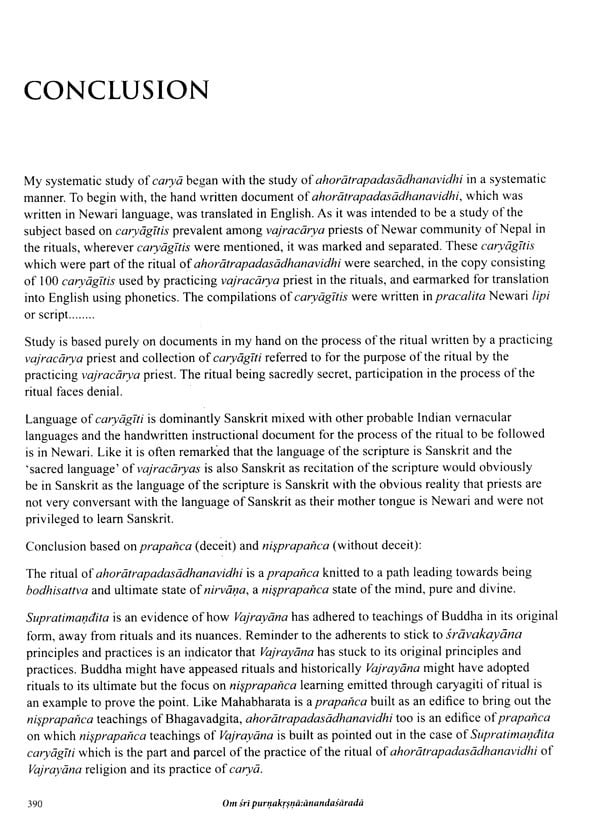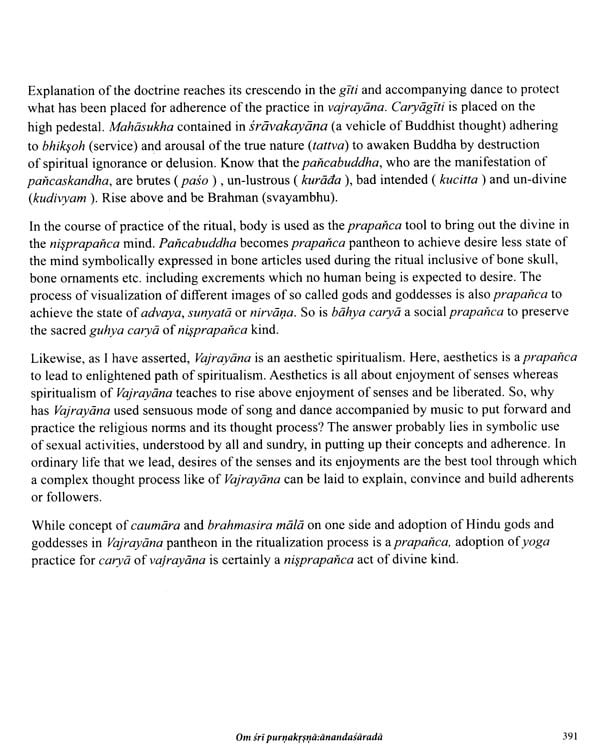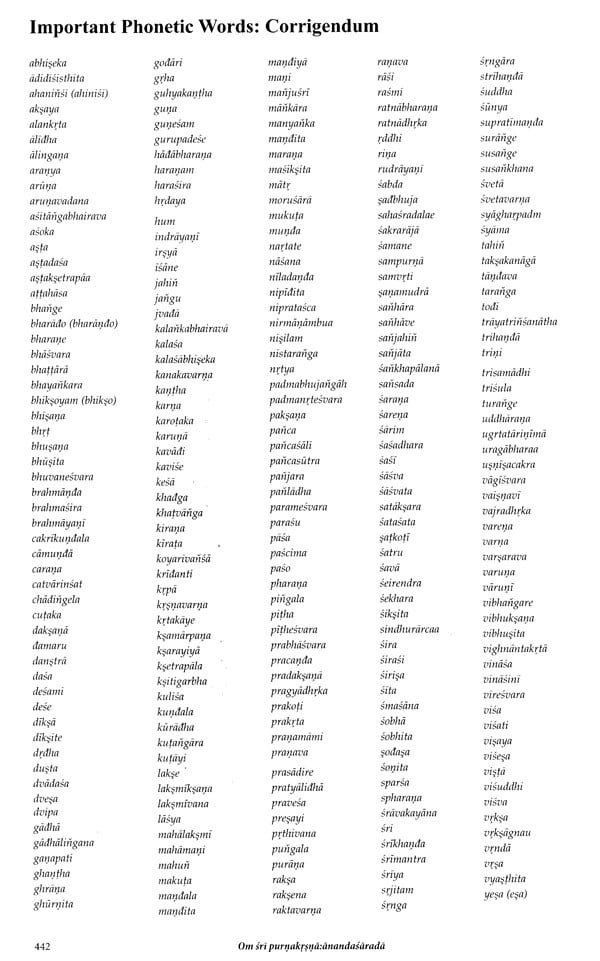
चर्यां- Dancing Away to Nirvana
Book Specification
| Item Code: | UBC637 |
| Author: | Arun Shrestha |
| Publisher: | Arun Shrestha, Nepal |
| Edition: | 2022 |
| ISBN: | 9789937122979 |
| Pages: | 444 (Throughout Color Illustrations) |
| Cover: | HARDCOVER |
| Other Details | 10.50 X 7.00 inch |
| Weight | 1.43 kg |
Book Description
Padasadhana has the element of dance or nrtya and caryagiti playing prominent role in which pada or posture of feet is a symbolic means to achieve what the ritual process aims for, that is - unification of the worshiper and the worshiped.
In padasadhana, pada combined with sadhana, the focal point is the symbolized pada or feet postures representative of the divinities the ritual aims to be one with.
Two papers presented on carya and caryanttya on the auspices of Department of Education and Sanskritik Sansthan, Kathmandu, Nepal. And has been writing consistently for the journal of arts and art education' on carya.
50 caryagitis credited to mahasiddhas, many among 84 mahasiddhas credited with writing of these caryapadas, caught the attention of the scholars and were the source of the study of caryagiti. The carvagitis sang and danced to by the Nepalese vajracarya priests in secret rituals failed to catch the limelight and remained in the shadows. Ratnakaji Vajracarya Gurujyu, a vajracirya priest with whom I associated myself for twenty long years, made a gesture, to be proud of, to collect, edit and publish host of caryagitis put in practice in the rituals by the Nepalese vajracarya priests. His introduction to these caryagitis was eye opener, but yet, almost a closed chapter.
During those fruitful years of my intellectual interaction with Ratnakaji Vajracarya Gurujyu, I met with another respected practicing vajracarya gurujyu, Saptamuni Vajracarya, who entrusted me a hand written copy of ahoratrapadasadhanavidhi, which he used as reference for conducting the ritual, along with manuscript of 100 caryagitis, to study and analyse. My quest and thirst to know what carya is all about, which began as inquisitiveness during my association with Ratnakaji Vajracarya Gurujyu, turned into a systematic study of the subject and its nuances, once those documents were in my hands.
In the course of my investigation, I came across masterly works of many scholars of repute. It began with manuscript of 50 caryilgiti in collection of Darbar Library of Nepal and its publication by Hara Prasad Shastri as Doha Kosa, contribution of Rahul Sankrityayan to its study and Dr. Suniti Kumar Chatterjees linguistic study of the old manuscript. Dr. Prabodh Chandra Bagchi's Carya Giti Kosa took the task to its completion. Benoytosh Bhattachary's An Introduction to Buddhist Esoterism and The Indian Buddhist Iconography were contributory to my knowledge of tajrayana Buddhism. Allex Wayman's Yoga of the Gulyasamajatantra and Yuganaddha by Herbert V. Guenther added to my insight into the religion of cajrayana Buddhism. Those were my first exposure to academic works on the subject of carya and vajrayana.
**Contents and Sample Pages**
